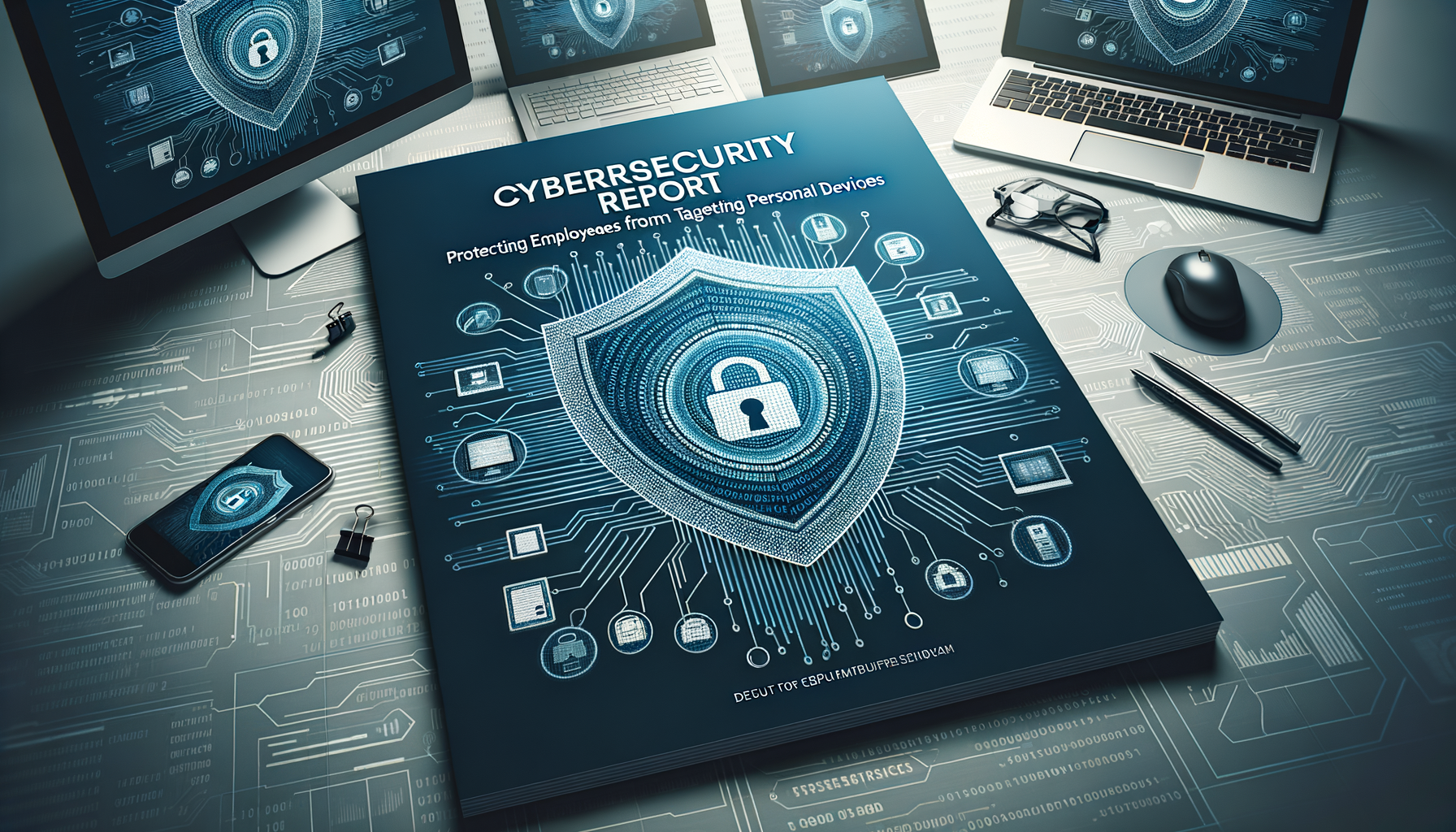
Introduction
The digital age has ushered in an era of unprecedented connectivity and technological advancements, but it has also given rise to a new breed of threats that transcend traditional boundaries. Cybercriminals are constantly evolving their tactics, exploiting vulnerabilities in both organizational systems and personal devices to gain unauthorized access, steal sensitive data, and disrupt operations.
The Department of Homeland Security (DHS), a critical agency responsible for safeguarding the nation’s security, is a prime target for these malicious actors. DHS employees, entrusted with handling classified information, intelligence operations, and critical infrastructure protection, are at heightened risk of being targeted by sophisticated scams and cyber attacks.
Scammers are no longer solely focused on breaching organizational networks but are actively targeting personal devices as potential entry points. With the increasing blurring of personal and professional digital lives, a successful compromise of an individual’s personal device can have far-reaching consequences, jeopardizing national security and public safety.
This comprehensive report delves into the multifaceted challenges faced by DHS employees in the realm of cybersecurity, analyzing the risks posed by scams targeting personal devices. It outlines robust solutions and recommends educational strategies to fortify their cyber resilience. By addressing these vulnerabilities proactively, we can safeguard the integrity of DHS operations, protect stakeholders, government officials, and ultimately, the broader public from the insidious threats posed by cyber scams.
Current Threats and Risks
- Phishing Attacks: Cybercriminals have become increasingly sophisticated in their phishing tactics, utilizing carefully crafted emails, text messages, and social media messages to impersonate legitimate entities such as banks, government agencies, or trusted individuals within the DHS hierarchy. These phishing attempts often employ psychological manipulation techniques, such as creating a sense of urgency or exploiting authority figures, to trick recipients into revealing personal information or clicking on malicious links or attachments that can deploy malware.
- Malware Infections: Personal devices can be infected with various forms of malware, including viruses, spyware, ransomware, and other malicious code, through several vectors. These include visiting compromised websites, opening infected email attachments, or falling victim to drive-by downloads facilitated by browser vulnerabilities. Once a device is infected, malware can exfiltrate sensitive data, lock devices for ransom, or spread laterally within DHS networks, causing significant disruptions and compromising critical operations.
- Public Wi-Fi Risks: The convenience of public Wi-Fi networks often comes at a significant security cost. Unsecured or poorly configured public Wi-Fi hotspots can allow attackers to intercept and monitor network traffic, steal login credentials, and potentially inject malware into connected devices. DHS employees who access sensitive information or connect to internal networks while using public Wi-Fi are at heightened risk of being compromised.
- Unpatched Software Vulnerabilities: Outdated operating systems, web browsers, and applications often contain known vulnerabilities that cybercriminals actively exploit to gain unauthorized access to personal devices. Failure to apply timely software updates and security patches can leave DHS employees’ devices exposed to these threats, providing an entry point for scammers and cyber attackers.
- Social Engineering Attacks: Cybercriminals frequently employ social engineering tactics, exploiting human psychology and manipulating individuals into divulging sensitive information or performing actions that compromise their devices and data. These tactics can range from impersonating authority figures within DHS, such as supervisors or high-ranking officials, to leveraging fear, urgency, or curiosity to trick victims into falling for their schemes.
- Physical Device Theft or Loss: Unsecured personal devices that contain sensitive DHS information or have access to internal networks pose a significant risk if they are lost or stolen. In the wrong hands, these devices can provide unauthorized access to critical systems and data, putting national security at risk.
- Insider Threats: While the majority of DHS employees are dedicated professionals, the risk of insider threats cannot be overlooked. Disgruntled or compromised individuals within the organization may intentionally or unintentionally leak sensitive information or introduce malware into DHS systems through their personal devices, either due to malicious intent or carelessness.
Robust Solutions
Addressing the multifaceted threats posed by scams targeting personal devices requires a comprehensive and multi-layered approach. DHS must implement robust technical solutions, foster a culture of cybersecurity awareness, and promote continuous education to fortify its cyber resilience effectively.
- Multi-Factor Authentication (MFA): Implementing MFA on all accounts and devices where available is a critical step in enhancing security. MFA adds an extra layer of protection by requiring not only a password but also an additional verification factor, such as a one-time code sent via SMS, an authenticator app, or a physical security key. This significantly reduces the risk of unauthorized access, even if a password is compromised.
- Comprehensive Security Software Suite: Deploying a robust suite of security software is essential for protecting personal devices from various threats. This includes:
- Antivirus and Anti-malware Solutions: Antivirus and anti-malware software can detect and remove malware threats, such as viruses, spyware, and ransomware, before they can cause significant damage.
- Firewalls: Firewall software monitors and filters network traffic, blocking malicious activity and preventing unauthorized access to personal devices.
- Virtual Private Network (VPN): A trusted VPN service creates a secure, encrypted connection when using public Wi-Fi or untrusted networks, protecting data from being intercepted by eavesdroppers.
- Regular Software Updates: Establishing a policy and procedures for ensuring that all operating systems, web browsers, and applications on personal devices are kept up-to-date with the latest security patches is crucial. These updates address known vulnerabilities that cybercriminals actively exploit, reducing the attack surface and mitigating potential compromises.
- Password Best Practices: Implementing and enforcing strong password policies is a fundamental aspect of cybersecurity. This includes:
- Requiring the use of strong, unique passwords for each account, consisting of a combination of uppercase and lowercase letters, numbers, and special characters.
- Encouraging the use of password managers, which can securely store and generate complex passwords, reducing the risk of password reuse or easily guessable credentials.
- Prohibiting the sharing or reuse of passwords across multiple accounts or individuals.
- Data Backup and Recovery: Implementing a robust data backup and recovery strategy is essential for protecting against data loss due to ransomware attacks, device failures, or other incidents. Regular backups of important data should be stored on external drives or secure cloud storage solutions, enabling swift recovery in the event of a compromise.
- Physical Security Measures:
- Secure storage solutions, such as locked cabinets or safes, should be provided for storing personal devices when not in use, preventing unauthorized access or theft.
- Strict policies and procedures should be implemented for the transportation and remote access of personal devices, minimizing the risk of data breaches or unauthorized network access.
- Full-disk encryption should be employed on all personal devices to protect sensitive data in case of theft or loss.
- Access Controls and Monitoring: Implementing strict access controls and monitoring mechanisms for personal devices connecting to DHS networks is crucial. Regular auditing and review of device access logs can help detect and respond to potential threats promptly. Additionally, enforcing a strict separation between personal and work-related activities on DHS-issued devices can minimize the risk of data leaks or unauthorized access.
- Incident Response and Recovery: A robust incident response plan should be established to quickly identify, contain, and mitigate cyber threats. This plan should include procedures for isolating affected devices, analyzing the scope of the breach, and implementing appropriate remediation measures. Regular testing and updates to the incident response plan are necessary to ensure its effectiveness in responding to evolving threats. Maintaining up-to-date backups and disaster recovery measures is also essential to minimize data loss and operational disruptions in the event of a successful cyber attack or data breach.
Education and Awareness
While technical solutions are vital, fostering a culture of cybersecurity awareness and continuous education is equally important in protecting DHS employees from scams targeting personal devices.
- Comprehensive Training Programs: Implementing mandatory cybersecurity training programs for all DHS employees is crucial. These programs should cover a wide range of topics, including:
- Identifying and reporting phishing attempts, social engineering tactics, and other scams.
- Practicing safe browsing habits and avoiding risky online behaviors.
- Understanding the importance of strong password practices and multi-factor authentication.
- Recognizing and reporting potential security incidents or suspicious activities. These training programs should be tailored to the specific roles and responsibilities of DHS employees, ensuring that they are equipped with the knowledge and skills necessary to mitigate cyber risks in their daily operations.
- Simulated Phishing and Impersonation Exercises: Conducting regular simulated phishing exercises can help test employees’ awareness and ability to identify potential threats. These exercises should be designed to mimic real-world phishing attempts, including spoofed emails, text messages, and social media messages. Additionally, simulated impersonation exercises should be implemented, where trusted individuals within the organization impersonate supervisors, high-ranking officials, or personnel with elevated clearance levels. These exercises can test employees’ ability to recognize and report such attempts, reinforcing the importance of verifying identities and following proper protocols.
- Ongoing Reinforcement and Awareness Campaigns: Cybersecurity awareness should not be a one-time effort. Regular refresher training sessions and security awareness campaigns should be conducted to reinforce best practices and address emerging threats. These campaigns can take various forms, such as newsletters, posters, or interactive online modules, ensuring that cybersecurity remains a top priority for all DHS employees.
- Clear Communication Channels and Reporting Mechanisms: Establishing accessible and user-friendly reporting mechanisms is crucial for empowering DHS employees to report suspicious activities or potential compromises promptly. These channels should be well-documented, and employees should receive clear guidance on how to report incidents, ensuring that potential threats are addressed swiftly and effectively.
- Collaboration with Law Enforcement and Cybersecurity Agencies: Fostering collaboration with law enforcement agencies and cybersecurity organizations is essential for staying informed about the latest scamming tactics, threat intelligence, and best practices. By sharing information and leveraging collective expertise, DHS can develop more effective countermeasures and stay ahead of evolving cyber threats.
- Public Outreach Campaigns: As a government agency responsible for protecting the nation’s security, DHS should partner with relevant organizations and cybersecurity experts to increase public awareness about scams targeting personal devices. Through public outreach campaigns, educational resources, and community events, DHS can promote best practices and empower citizens to protect themselves from these insidious threats.
Software Recommendations
While DHS may have its own approved software solutions, the following recommendations can serve as a starting point for personal device protection:
Free Options:
- Bitdefender Antivirus Free Edition (Antivirus)
- ZoneAlarm Free Firewall (Firewall)
- OpenVPN (VPN)
- LastPass/Bitwarden (Password managers)
Paid Options (often with enhanced features):
- Norton 360 (Comprehensive security suite)
- Malwarebytes Premium (Anti-malware)
- NordVPN/ExpressVPN (VPN)
It is important to note that software recommendations may evolve over time, and DHS should regularly research and evaluate the latest options to ensure optimal protection.
Conclusion
In the ever-evolving landscape of cybersecurity threats, proactive measures are imperative to safeguard the integrity of DHS operations and the sensitive information entrusted to its employees. By implementing robust technical solutions, fostering a culture of cybersecurity awareness, and promoting continuous education, DHS can fortify its cyber resilience and effectively mitigate the risks posed by scammers targeting personal devices.
However, it is crucial to recognize that cybersecurity is an ongoing endeavor that requires continuous adaptation and vigilance. As threats evolve, DHS must remain agile, regularly reassessing its security posture and staying informed about the latest tactics employed by malicious actors. By maintaining a proactive stance and fostering collaboration among employees, stakeholders, relevant agencies, and the broader cybersecurity community, DHS can effectively protect its personnel, operations, and the public from the insidious threats posed by cyber scams.
Cybersecurity is not just a technical challenge but a cultural and organizational commitment. By empowering DHS employees with the knowledge, tools, and resources to recognize and mitigate cyber threats, the agency can cultivate a resilient and secure environment that safeguards national security interests while upholding the trust of the American people.

